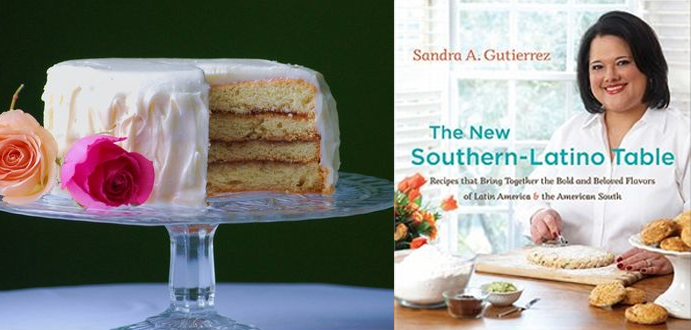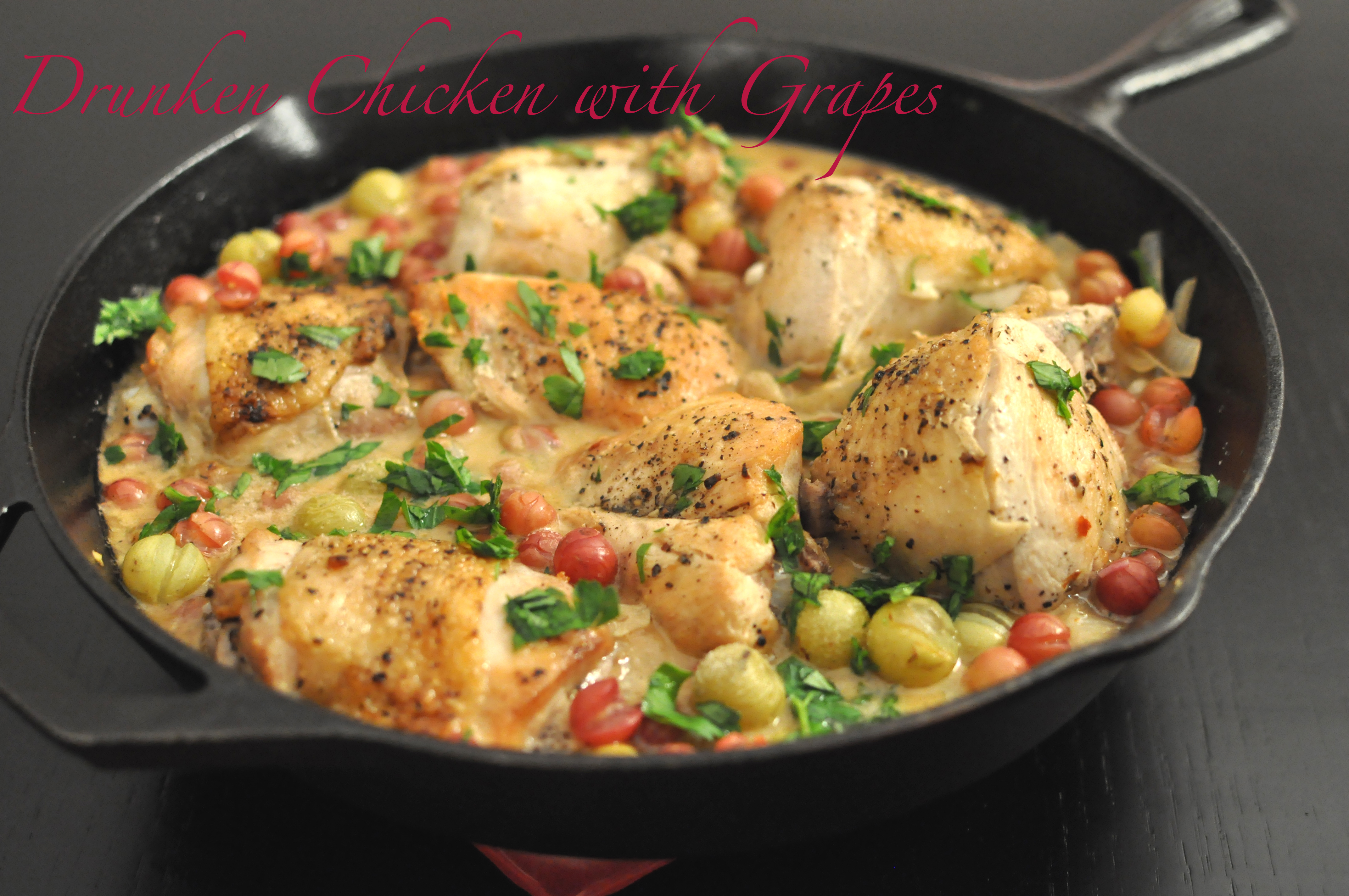Sometimes great recipes are found in unlikely places. My favorite chocolate chip cookies are still the ones I learnt to make 15 years ago in my Home Economics class from a uninspiring manual in Times Roman font. When making cupcakes, my go-to is the simple formula on the back of a packet of self-raising flour. So I’ve long since learned not to turn my nose up at recipes even when they come packaged in…not so pretty packages. And this brings me to The New Southern-Latino Table.
I was sent the cookbook by the author, Sandra A. Guterierrez’s agent, and upon first glance, I was distinctly less than impressed (I admit, I hadn’t actually read any of the recipes yet). I’m not proud of myself for making such a hasty judgement, because it turns out that it really is a great book. But I’m a sucker for pretty pictures, seduced at the drop of a hat by images of decadent desserts, oozy melty cheesy dishes and well, you get the idea. Unfortunately the photos in the book reminded me of those over-styled, awkwardly shot, ultra-staged cookbooks of the 80’s. There was only one photo that yielded an “ooh, that looks tasty,” and that’s the one of the guava cake below. (By the way, so as not to mislead,the photo above of the Drunken Chicken with Grapes is my photo! Although I have to admit, I do think it looks better than the one in the book.) But the poor photography is not Gutierrez’s fault. It turns out the publishers only shelled out for a professional photographer for the book’s cover, the photos inside, of which there aren’t all that many, were taken by Gutierrez herself. And by her own admission, the were mostly taken while her family patiently waited to tuck into their dinner!
Still, once I got over the retro photography, and delved into the actual recipes, I couldn’t put the book down. As the title lets on, Gutierrez uniquely and seamlessly melds Latin American cuisine with traditional and contemporary Southern fare. Everything I read was new and innovative, and revealed some clever combination of ingredients and flavors that I hadn’t really considered before. Nothing seems forced or contrived – of course it makes perfect sense to add chile to your brownies for more depth of flavor and an interesting subtle heat to offset the creamy richness of the chocolate. Every time I turned the page I had an “Aha” moment, and every time I turned the page I came upon yet another recipe that I couldn’t wait to try. Miami Guava and Cream Cheese Empanaditas, Latin Fried Chicken with Smoky Ketchup, Rib Eyes with Pimiento Cheese, Butter and Chimichurri, Sweet Tomato Cobbler, Peach and Bourbon Tres Leches Pudding, and Sweet Potato Churros are just some of the recipes on my must-cook-now list.
I think the reason why Gutierrez is so successful in her fusion of these two cuisines, which have no logical connection, is because it developed entirely naturally as a consequence of her own travels, and as a consequence of her efforts to recreate her native, Latin American cuisine in her adopted Southern home. Gutierrez was born in the U.S. but moved to Guatemala City as a young girl. As a young bride she found herself back in the U.S., this time in North Carolina. Unable to find all the ingredients she needed to recreate Guatemalan food, she began to find substitutes in Southern staples. Cornmeal would be used in place of masa harina, and hot sauce in place of chiles.
To learn that Sandra A. Gutierrez is a culinary teacher with many years of instruction under her belt, is no surprise. All her recipes are preceded by substantive introductions that give you insight into the provenance of the dish underneath, technique tips about how to get it just right, and guidance on buying the necessary ingredients. Interspersed through the book are mini-essays with titles ranging from the cryptic “Cilantro Gene” to the fact-filled “Brief History of Pork in the Americas.
The real test of a cookbook is, of course, the accuracy and reliability of its recipes once you get down and dirty with it in the kitchen. And so I decided to cook from The New Southern-Latino Table. Since we are all about grapes this week on Spade & Spatula, there was one recipe that leapt out at me: Drunken Chicken with Muscadine Grapes and White Wine. I trawled through my local green markets and specialist grocery stores but couldn’t find any Muscadine grapes. No matter – I followed Gutierrez’s advice and just used seedless red grapes, or more specifically seedless Reliance grapes. In short, the end dish was truly delicious, in fact, it was so tasty and deeply flavorful, even I was surprised, especially since save for the fruit, there was nothing unconventional about this easy-to-prepare chicken fricassee. White wine, plenty of Videlia onions, garlic, olive oil, bay leaves and Dijon mustard simply came together and joined forces with the grapes to transform plain, old prosaic chicken. And if you’re dubious about letting grapes join the ranks of the savory part of your pantry, don’t be. They added just the perfect hit of sweetness, expertly counterbalancing the slight tang and spice of the mustard. Just be careful not to overcook them: simmer the dish just until the grapes soften and begin to burst their skins, but keep their shape. You’re looking for little bursts of fruitiness rather than a sweet mush that collapses entirely into the pan juices.
And if you’re still not convinced you need to add this cookbook to your shelf, here’s the recipe for the chicken with grapes. There’s just one caveat, if you cook it and love it, you have to promise me you’ll go out and by the book (I really do like it that much…didn’t you hear me…Peach and Bourbon Tres Leches Pudding!!!!)

Drunken Chicken with Muscadine Grapes and White Wine
Use seedless red grapes in place of muscadine grapes if you can’t find them.
From The New Southern-Latino Table by Sandra A. Gutierrez
Serves 6
1 chicken (4 1/2-5 pounds), cut into 10 serving pieces
1 1/2 tsp. salt
1/2 tsp. freshly ground black pepper
2 Tbs. extra-virgin olive oil
5 cups thinly sliced Videlia onion
3 large garlic cloves, thinly sliced
2 Tbs. Dijon mustard
1 bay leaf
1/2 tsp. red pepper flakes
1 cup white wine
3 cups muscadine (or seedless red) grapes, halved and seeded (along with any skins that slip off)
1/4 cup chopped flat-leaf parsley (leaves and tender stems)
Pat the chicken dry with paper towels; season with the salt and pepper. In a large Dutch oven, heat the oil over medium-high hear; working in batches, brown the chicken pieces on all sides and transform them to a platter; discarding all but 1 tablespoon of the oil left in the pan. Add the onions to the pan and cook for 4 -5 minutes, stirring occasionally, until soft. Add the garlic, mustard, bay leaf and red paper flakes; cook, stirring, for 30 seconds, or until the garlic is fragrant. Add the wine and deglaze by scraping the bottom of the pan; bring to the boil. Return the chicken (and all of the juices that have collected at the bottom of the platter) to the pan. Cover, reduce the heat to low, and simmer for 15 minutes. Add the grapes (and skins) and stir well; cover and simmer for 25 minutes, or until the chicken is cooked through (the juices will run clear when the chicken is pierced with a fork). Taste the sauce and adjust the salt and pepper. Transfer the stew to a serving platter and sprinkle with parsley; serve immediately.
